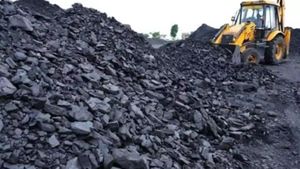On February 24th, 2023, communities across the region woke to the jarring realization of having been struck by a powerful earthquake. Measuring 7.2 on the Richter scale, the quake left behind substantial destruction and loss, prompting immediate action from local governments and emergency services.
According to reports, various regions experienced significant structural damage, including city centers and more remote rural areas. Buildings trembled, and several collapsed, leading to danger not just from the quake itself but also from potential aftershocks. Earthquake researchers reported the possibility of smaller tremors continuing for days following the initial disaster.
City Mayor John Doe, as cited by The National News, stated, "We are working tirelessly to support the community during this crisis," highlighting the urgent efforts of local authorities to provide relief and support to those affected. Emergency services have been mobilized across the region to assess the damage and coordinate rescue efforts.
Jane Smith, the Local Emergency Services Coordinator, noted, "Emergency services are mobilizing to assess the damage and provide aid to those affected," emphasizing the critically important role of response teams. The multi-faceted emergency response includes searching for survivors, providing medical assistance, and distributing necessities such as food and water.
The infrastructure impact has been immense. Many buildings, homes, and public services have suffered damage or total destruction. Essential services like electricity and water have been disrupted, affecting entire neighborhoods. Local authorities have recognized the severity of the situation; estimates released have indicated significant challenges await as repair and restoration efforts begin.
The regional hospital reported being overwhelmed with patients, with many victims brought in suffering from injuries sustained during the quake. Emergency medical technicians and volunteer medical personnel are working day and night to provide care, highlight of the human resilience during times of crisis.
Residents have shared harrowing tales about their experiences. Some have taken to social media, describing their fears and the immediate chaos following the quake. One resident, Sarah Johnson, explained, "I thought the world was coming to an end, it was terrifying! We ran outside, and that's when we saw the building next to ours collapse." These personal accounts offer chilling insights, underscoring the very real human impact of seismic events.
Rescue efforts are compounded by the considerable challenges posed by infrastructure damages. Roads have been blocked by debris, complicate timely response and recovery efforts. Amid this chaos, local leaders have been vocal about the need for support, facilitating coordination with national and international relief organizations.
Local officials have also drawn attention to the necessity of reinforcing structures and ensuring buildings meet seismic standards for the future, as discussions around long-term resilience increasingly take center stage. They stress this not just as immediate recovery but as investment toward future disaster preparedness.
With recovery efforts underway, discussions about rebuilding have already begun. Local governments are committed to working with engineers and architects to design more resilient infrastructures. They are prioritizing evacuation routes and establishing emergency workshops focused on safety and building practices.
Emergency response teams continue to work closely with citizens, fostering community support networks. The city is planning town hall meetings to engage residents, allowing them to voice their concerns, needs, and ideas. Mayor Doe encourages community involvement, stating it's "vital for recovery and to rebuild stronger together."
Despite the challenges, there remains hope among the affected populace. The spirit of resilience shines through as people come together to support each other. While the road to recovery will require time, coordination, and resources, the community is already showing signs of unity and strength.
Throughout the aftermath of the February 24th earthquake, external support is expected to complement local efforts. NGOs and government agencies have voiced their commitment to mobilizing financial resources and volunteers to assist with everything from immediate relief to extensive rebuilding plans.
With recovery processes set to be methodical and inclusive, authorities are optimistic. They are appealing to others for assistance, affirming the collaborative spirit needed to get through this trying period. It's the promise of rebuilding—not just structures, but lives.



